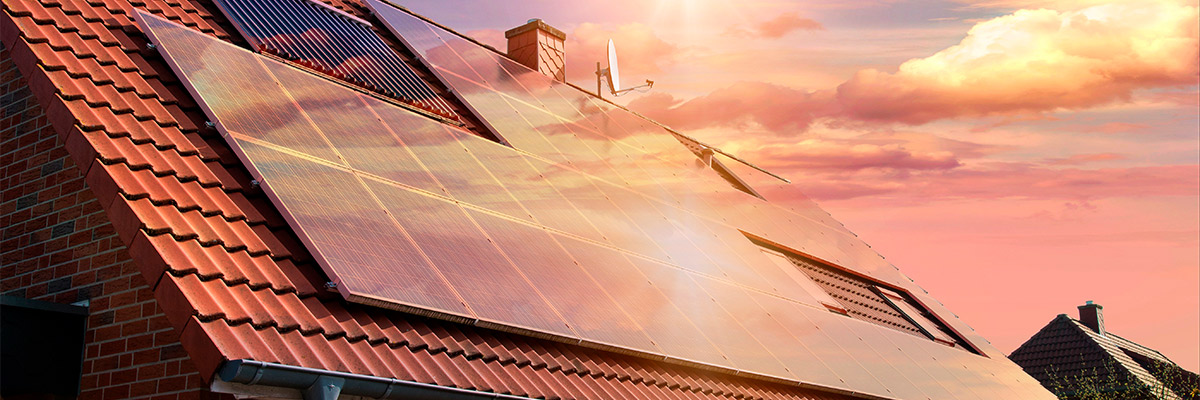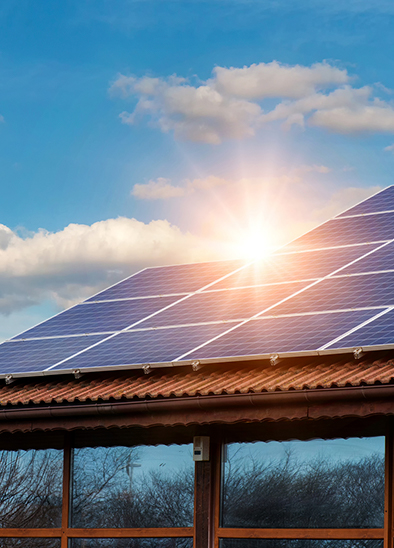
All about solar heating
All about solar heating
Affordable and sustainable comfort
Solar heating: what it is, types, and benefits
Solar heating: what it is, types, and benefits
Choosing a suitable HVAC system for the home can bring us both benefits in terms of well-being and economic savings. Solar heating is an alternative to consider, among other things, because it minimizes the environmental impact of heating or cooling the home.
Generally, those who are interested in installing some type of solar heating system in their homes need to use another method to replace this system during cloudy days, rainy days, or at night. Hence, it is a particularly valid option for areas or regions with less rainfall, where bad weather is not constant throughout the year.
Nowadays, most families are not only looking for the most economical energy option for their homes, but are also concerned about leaving the smallest environmental footprint. Knowing exactly what solar heating is and what types there are can help us make the right decision when choosing between one method and another and, at the same time, contract the energy plan that best suits our particular situation and needs.
What is solar heating?
What is solar heating?
Solar heating is a type of HVAC system that is becoming more and more common in homes. The system is offered in various models, all of them focused on generating significant savings in consumption, since it is powered by sustainable and renewable energy such as solar rays, without neglecting comfort and well-being.
Few things are more pleasant in cold weather than feeling the warmth of the sun's rays coming through the windows and doors of our homes. When we talk about solar heating we refer, in broad terms, to the use of this solar energy to convert it into heat for the home in a systematic way.
There is not just one way to obtain its use. Thus, solar heating systems can be divided into two types, active and passive. While the former use different technologies to attract and transform the sun's rays into heat for your home, the latter are based on an architectural design intended to make the most of the heat generated by the sun during the day.
Currently, and increasingly, heating is one of the main applications that can be given to solar energy, either because the construction of properties is based on the premise that the design must be conditioned to the optimization of this energy source (passive systems), whether it is to activate devices that run on electricity or to power solar heating systems that start up with hot water (active systems).
Types of solar heating
Types of solar heating
Now let's take a closer look at how the existing types of solar heating work:
- It is capable of maintaining the temperature of a house without the need to turn on any of the traditional HVAC systems, thanks to its unique design and construction (orientation and location, quality materials, adequate insulation, air circulation, etc.).
It requires an appropriate design and distribution to store solar energy in walls and floors and use it in times of need. The house heats itself, almost without human intervention and silently. It is a type of solar heating that can complement other systems and help reduce costs, or even, in some cases, be the only existing one.
Thus, making use of passive solar heating reduces energy consumption by a high percentage, always depending on the circumstances. It should be noted that the most avant-garde architectural trends consider passive solar heating to be the future of heating and cooling.
This type of heating is part of the so-called bioclimatic architecture, which bases the construction and design of its projects on the integration and adaptation to its environment, in order to make the best use of available resources, including solar energy.

- Heating with photovoltaic solar energy. This type of HVAC system is powered by the electricity generated by photovoltaic solar panels, installed on roofs or rooftops, by capturing the radiation of the sun's rays and converting it into electricity. Solar panels are composed of photovoltaic cells made of silicon, a material with high conductive properties. Aerothermal energy or heat pumps are some examples of solar heating powered by photovoltaic solar energy.
- Heating with solar thermal energy. Heating the home is one of the most common uses of solar thermal energy, which uses solar thermal panels, covered with transparent tempered and dark glass, to attract solar radiation and transform it into heat energy. There are two main types of solar thermal panels: those that allow the circulation of water through a circuit in the panel itself, without storing it; and those that do include a storage device for later use. The installation works with collectors that collect and concentrate heat to produce high temperatures. Among the most common types of heating with solar thermal energy we can point to solar radiators or underfloor heating. As we can see, the main differences between photovoltaic and thermal solar panels can be summarized by the type of energy obtained from the sun's rays, the mode or operation to achieve this transformation, or the material from which the panels are made.
- Solar heating with hot air. This method of heating a house works by heating the air from the outside through a fan, which is installed on the roof or façade and then blown into the house. It is a very effective method for damp and cold homes, such as second homes that are often closed for long periods of time, as it creates warm, pleasant, and dry environments quickly, as well as helping to eliminate mold and odors. It can function as a primary heating system or as a backup to the primary heating system.
- Hybrid systems. A hybrid home heating system is one that combines at least two energy sources, such as solar and geothermal, to extract the maximum performance or the best characteristics of both and thus provide a high level of thermal comfort. Since it is a very versatile and flexible system, it is becoming the most popular choice when updating heating in older homes, but also as an efficient and sustainable alternative in new buildings.
Contract solar energy for your home
We have affordable solutions for any home. Join us for energy!
Solar heating benefits
Solar heating benefits
Among the fundamental advantages of solar heating are the following:
- The sun's rays are an inexhaustible and clean source of energy, one hundred percent sustainable.
- It is a system that requires a relatively simple installation and a single initial investment.
- Thanks to subsidies and grants, they are paid off in a few years.
- Once installed, it is easy to maintain, with a lifespan of around 25 to 30 years.
- It provides families with economic and energy savings, reducing electricity and/or gas bills by up to 80%.
You may also be interested in
You may also be interested in

Solar panel maintenance
Solar panel maintenance
Keeping your panels in perfect condition ensures optimum performance. Discover the steps to follow.

Solar trackers
Solar trackers
We explain what they are, their advantages, and how they work. We'll tell you everything you need to know about solar trackers.

Bioclimatic architecture
Bioclimatic architecture
Find out all about this type of designs that take advantage of natural resources to reduce consumption.